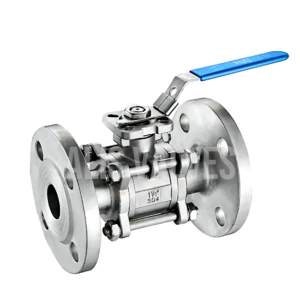In industrial systems, valves are crucial components for controlling the flow of liquids, gases, and other substances. Historically, manual valves, operated by hand wheels or levers, have been the go-to option for many industries. However, with technological advancements, electric actuators are increasingly replacing traditional manual valves due to their superior precision, automation, and efficiency. This article explores the key benefits of electric actuators over manual valves and highlights why they are becoming essential in modern industrial applications.
What Are Manual Valves?
Manual valves, as the name suggests, require human intervention to open, close, or adjust the valve position. Common types of manual valves include ball valves, gate valves, globe valves, and butterfly valves. These valves are typically operated using a hand wheel, lever, or gear mechanism. They are straightforward in design, easy to maintain, and have been used for decades in various industrial applications.
Advantages of Manual Valves:
- Simplicity: Manual valves are simple in construction, making them easy to operate and maintain.
- Cost-Effectiveness: They are generally cheaper to install and operate as there are no additional costs associated with power sources, controllers, or actuators.
- Reliability in Certain Conditions: Manual valves can be highly reliable in applications where automation and frequent adjustments are not required.
- Versatility: They can be used in a variety of applications, including water treatment, oil and gas, and chemical industries.
Limitations of Manual Valves:
- Human Error: Since manual valves rely on human intervention, there is a risk of operational errors, especially in complex systems.
- Lack of Precision: Fine-tuning the valve position is difficult, making it challenging to achieve precise flow control.
- Time-Consuming: Operating manual valves, especially in large systems, can be time-consuming and labor-intensive.
- Inconsistent Performance: The performance of manual valves can vary depending on the strength and skill of the operator.
What Are Electric Actuators?
Electric actuators are devices that convert electrical energy into mechanical motion to operate valves automatically. They can be integrated with various types of valves, including ball, butterfly, and gate valves. Electric actuators enable remote control, automation, and precise positioning of the valves, which significantly enhances system efficiency and safety.
Advantages of Electric Actuators:
- Automation and Remote Control: Electric actuators allow for remote operation and automation, making it possible to control valves from a central location. This feature is invaluable in industries with complex and hazardous environments where manual operation is impractical or dangerous.
- Precision and Accuracy: Electric actuators can position the valve with extreme precision, ensuring accurate flow control. This level of precision is vital in industries where small changes in flow can have significant impacts, such as in chemical processing or pharmaceuticals.
- Increased Safety: Since electric actuators eliminate the need for manual intervention, they reduce the risk of accidents or injuries in hazardous areas.
- Integration with Control Systems: Electric actuators can be integrated with digital control systems, such as SCADA (Supervisory Control and Data Acquisition) or DCS (Distributed Control System). This integration enables advanced monitoring, diagnostics, and automatic adjustments based on real-time data.
- Energy Efficiency: Electric actuators are energy-efficient, using power only when operating, which reduces overall energy consumption compared to manual or pneumatic actuators.
- Consistency and Reliability: Unlike manual valves that can be prone to inconsistent performance, electric actuators provide consistent and repeatable operations every time.
- Programmability: Electric actuators can be programmed to operate in specific sequences, adding flexibility and control to industrial processes.

Limitations of Electric Actuators:
- Initial Cost: Electric actuators can be more expensive to install due to the cost of the actuator unit and necessary control systems.
- Dependency on Power Supply: Electric actuators require a reliable power source. In the event of a power outage, the valve may fail unless backup power systems are in place.
- Maintenance Complexity: Compared to manual valves, electric actuators require more sophisticated maintenance due to the electrical components and integration with control systems.
Electric Actuators vs. Manual Valves: Key Comparisons
When comparing electric actuators and manual valves, it’s essential to consider the specific application and industry requirements. Here’s a closer look at how these two options stack up against each other:
- Control and Precision: Electric actuators offer unmatched precision in valve control. While manual valves depend on human operation and may lack fine-tuning capabilities, electric actuators can achieve exact valve positions, making them ideal for processes requiring stringent flow control.
- Efficiency: Electric actuators enhance efficiency by allowing operators to control multiple valves simultaneously from a remote location. This capability is particularly beneficial in large-scale industrial facilities where managing multiple manual valves would be labor-intensive and time-consuming.
- Safety: Electric actuators are a safer option in hazardous environments, as they reduce the need for personnel to be physically present in dangerous areas. For example, in the oil and gas industry, where high pressure and toxic gases are a concern, using electric actuators can minimize the risk of exposure to hazardous conditions.
- Operational Speed: Electric actuators can operate valves quickly, making them suitable for applications where fast response times are critical. In contrast, manual valves can take longer to operate, especially in high-pressure systems that require significant effort to open or close.
- Cost Consideration: While manual valves are generally cheaper to purchase and install, the long-term costs associated with manual operation, labor, and potential safety risks can add up. Electric actuators, though having a higher initial cost, can lead to cost savings over time through automation, energy efficiency, and reduced labor costs.
- Maintenance Requirements: Manual valves are easier to maintain, as they have fewer components and no electronic systems. Electric actuators, on the other hand, require specialized maintenance, but this is often offset by their ability to provide real-time diagnostic information and predictive maintenance capabilities.
Applications of Electric Actuators in Modern Industries
Electric actuators have found widespread use across various industries due to their adaptability and advanced features:
- Oil and Gas: Electric actuators are used for remote and precise control of valves in pipelines and refineries, reducing the need for manual intervention in potentially hazardous areas.
- Water Treatment: They enable automated control of valves for water distribution and treatment processes, ensuring efficient water management.
- Power Generation: Electric actuators play a crucial role in controlling steam, water, and gas flow in power plants, optimizing energy production.
- Pharmaceuticals: Precise control of flow rates and automation are critical in pharmaceutical manufacturing processes, making electric actuators a preferred choice.
Conclusion
While manual valves have their place in simpler applications, electric actuators provide numerous benefits that make them indispensable in modern industrial settings. Their precision, automation capabilities, safety features, and integration with control systems set them apart from manual valves, making them the preferred choice for industries aiming to optimize performance, enhance safety, and achieve better control over their processes.







